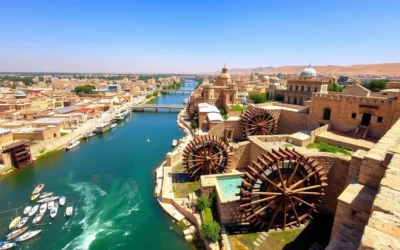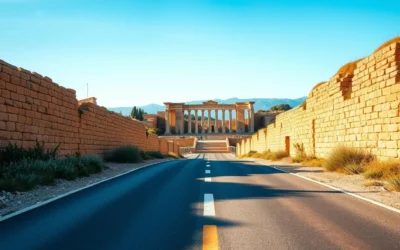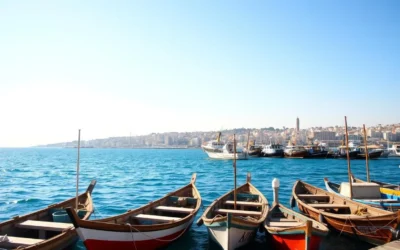Did you know that Latakia is home to Syria’s oldest port, dating back over 2,000 years to the Phoenician era? This Mediterranean coastal gem offers a striking contrast to Syria’s desert landscape, with beautiful beaches, mountain views, and a rich tapestry of history spanning millennia. Once a popular tourist destination in the Middle East, Latakia is gradually reclaiming its place on travelers’ maps with its unique blend of relaxed beach culture and historical significance.
Latakia at a Glance
Latakia (also spelled Lattakia) is Syria’s principal seaport and the country’s fifth-largest city. Located on the Mediterranean coast, it offers a distinctly different atmosphere from the rest of Syria. The region is known for its Alawite population, a more moderate Islamic sect, and has historically been more liberal than other parts of the country. The city combines ancient history with a relaxed coastal vibe, making it a fascinating destination for travelers seeking both cultural experiences and beach relaxation.
Ready to explore Latakia?
Start planning your journey to this Mediterranean gem with these trusted travel services:
Getting There & Planning Your Journey
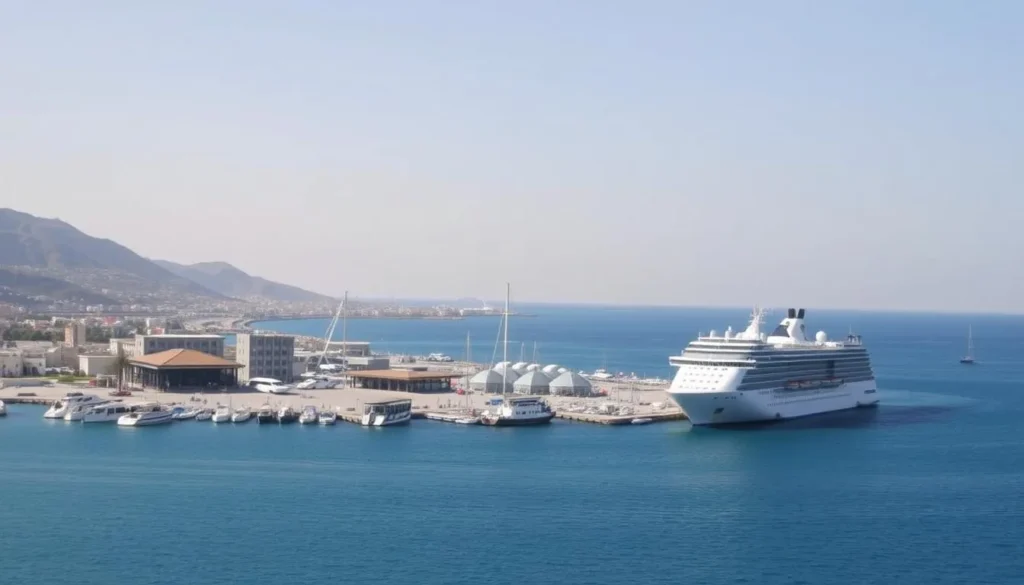
Most international travelers reach Latakia via Damascus or Beirut (Lebanon). As of 2025, direct international flights to Latakia’s Bassel Al-Assad International Airport remain limited, though the situation continues to evolve.
From Damascus
The journey from Damascus to Latakia takes approximately 3-4 hours by car or bus, covering about 350 km (217 miles). The route passes through Homs and offers scenic mountain views as you approach the coast.
From Beirut
Many travelers enter Syria through Lebanon. The Beirut to Latakia journey takes around 4-5 hours, including border crossing time. Private taxis or organized tours are the most reliable options for this route.
Important: Always check the latest visa requirements and travel advisories before planning your trip. Entry regulations for Syria can change frequently, and most nationalities require advance visa approval.
For the most convenient travel experience, consider booking your transportation in advance:
Best Time to Visit & Weather Tips
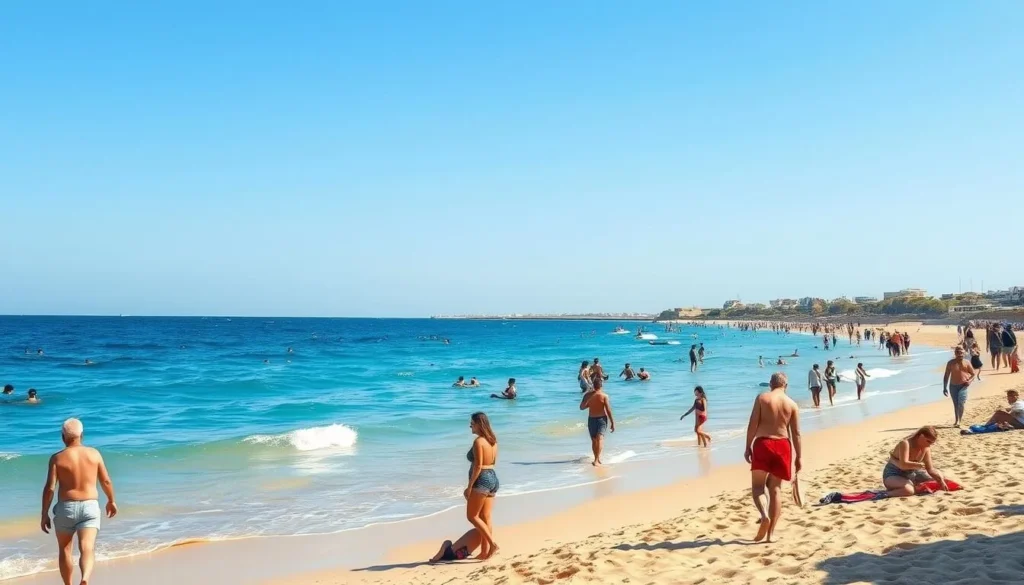
Best Time to Visit Latakia
Recommended Months:
- April to June: Pleasant temperatures (20-28°C/68-82°F) with low humidity and minimal rainfall.
- September to November: Warm sea temperatures and comfortable weather after the summer crowds have departed.
Months to Avoid:
- July to August: Peak summer with high temperatures (30-35°C/86-95°F) and humidity, plus larger crowds.
- December to February: Cooler temperatures (10-15°C/50-59°F) with increased rainfall, though still milder than most of Syria.
Seasonal Highlights
Latakia enjoys a Mediterranean climate with hot, dry summers and mild, relatively wet winters. The city receives significantly more rainfall than Syria’s interior regions, contributing to its lush coastal vegetation.
| Season | Temperature | Precipitation | Highlights |
| Spring (Mar-May) | 15-25°C (59-77°F) | Low | Blooming landscapes, ideal sightseeing weather |
| Summer (Jun-Aug) | 25-35°C (77-95°F) | Very low | Beach season, water activities, nightlife |
| Fall (Sep-Nov) | 18-28°C (64-82°F) | Increasing | Warm sea, fewer tourists, harvest season |
| Winter (Dec-Feb) | 10-18°C (50-64°F) | Highest | Cultural experiences, lower prices |
Getting Around Locally

Navigating Latakia is relatively straightforward, with several transportation options available for exploring the city and surrounding areas.
Taxis
The most convenient option for tourists. Yellow taxis are abundant and affordable. Always negotiate the fare before starting your journey or insist on using the meter. A typical ride within the city costs 2,000-5,000 Syrian pounds.
Minibuses
Local minibuses (servees) connect different parts of the city and are extremely budget-friendly. Routes are indicated on the front windshield, though usually in Arabic. Fares are fixed and very inexpensive.
Rental Cars
For exploring the broader coastal region, renting a car offers the most flexibility. International driving permits are recognized, and fuel is relatively inexpensive compared to European prices.
Need transportation in Latakia?
Secure your rental car in advance for the best rates and availability:
Where to Stay in Latakia

Latakia offers a range of accommodation options, from luxury beachfront resorts to budget-friendly city hotels. Most international-standard hotels are concentrated along the corniche (waterfront) or in the city center.
Recommended Areas to Stay
Corniche Area
Best for: Beach access, sea views, and proximity to restaurants
The waterfront area offers the most scenic accommodations with easy access to beaches and water activities. Several upscale hotels line this stretch, offering pools and private beach access.
City Center
Best for: Cultural experiences, shopping, and local atmosphere
Staying in the heart of Latakia puts you close to markets, historical sites, and authentic local restaurants. Accommodations here tend to be more affordable than beachfront options.
Southern Suburbs
Best for: Quieter atmosphere and value
The areas south of the city center offer newer hotels with modern amenities at more competitive prices, though you’ll need transportation to reach the main attractions.
Find Your Perfect Stay in Latakia
Browse accommodations and secure the best rates:
Dining & Local Cuisine

Latakia’s cuisine blends traditional Syrian flavors with Mediterranean influences, with a particular emphasis on fresh seafood. The city’s coastal location provides access to excellent fish and shellfish, while the surrounding agricultural regions supply fresh produce year-round.
Must-Try Local Dishes
- Samak Meshwi: Grilled fish seasoned with local herbs and spices, typically served whole with tahini sauce.
- Kibbeh Nayeh: A coastal variation of Syria’s national dish, often made with fresh fish instead of meat.
- Sultan Ibrahim: Red mullet fish, a local specialty usually fried and served with tarator sauce.
- Coastal Mezze: Traditional Syrian appetizers with local twists, including seafood variations of hummus and moutabal.
- Latakia-style Shawarma: Often includes unique local seasonings and is served with distinctive regional sauces.
Where to Eat
Seafront Restaurants
The restaurants along the corniche offer the freshest seafood with beautiful Mediterranean views. While slightly more expensive, they provide the quintessential Latakia dining experience.
Old City Eateries
For authentic local cuisine at reasonable prices, explore the small restaurants in the old city. Many family-run establishments serve traditional dishes passed down through generations.
Modern Cafés
Latakia has a growing café culture, particularly in the university area, offering a mix of Syrian and international dishes in contemporary settings popular with younger locals.
“The seafood in Latakia is among the freshest you’ll find in the Middle East, with dishes that perfectly balance traditional Syrian flavors with Mediterranean influences.”
Top Attractions & Sightseeing in Latakia

Latakia offers a fascinating mix of historical sites, natural beauty, and cultural experiences. From ancient ruins to relaxing beaches, the region provides diverse attractions for every type of traveler.
Historical Sites
Latakia Citadel
This historic fortress offers panoramic views of the city and sea. Originally built during the Seleucid period, it was later expanded by the Crusaders and Ottomans, creating a fascinating architectural blend spanning multiple eras.
Ugarit Archaeological Site
Located 12 km (7.5 miles) north of Latakia, this ancient Canaanite city dates back to 6000 BCE. Ugarit is renowned as the birthplace of the first alphabetic writing system and contains some of the earliest evidence of written music in the world.
Latakia National Museum
Housing artifacts from the region’s rich history, the museum showcases collections from the Phoenician, Greek, Roman, and Byzantine periods, providing context for the many archaeological sites in the area.
Old City
Wander through the atmospheric streets of Latakia’s old quarter, where Ottoman-era architecture, traditional markets, and historic mosques offer glimpses into the city’s layered past.
Explore Latakia’s Rich History
Discover guided tours and cultural experiences:
Natural Attractions
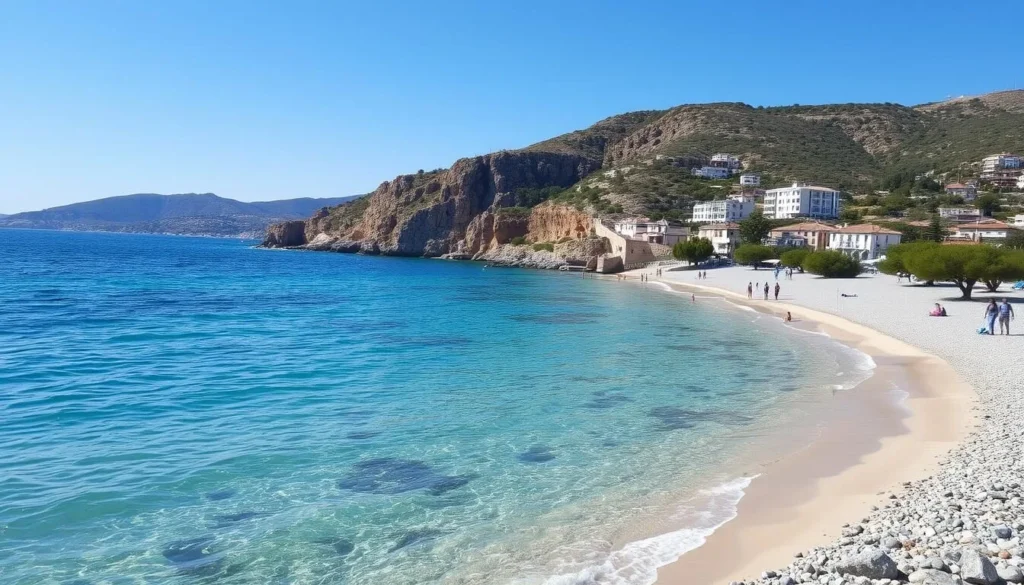
Al-Fakhria Beach
One of Latakia’s most popular beaches, offering golden sands and clear waters. The beach is well-maintained and features facilities including restaurants and water sports rentals during the summer season.
Slunfeh Mountain Resort
Located in the mountains east of Latakia (about 50 km/31 miles), this resort area offers a cooler climate, pine forests, and spectacular views. It’s a popular retreat during summer months when coastal temperatures rise.
Latakia Corniche
The city’s waterfront promenade stretches along the Mediterranean, offering scenic walks, especially at sunset. Lined with cafes and restaurants, it’s the social heart of the city where locals gather in the evenings.
Cultural Experiences & Festivals

Latakia’s unique position as a coastal city with diverse religious and ethnic communities has created a rich cultural tapestry. The city offers numerous opportunities to experience authentic Syrian traditions, arts, and celebrations.
Cultural Venues
- Dar Al-Assad for Culture: The city’s main cultural center hosts regular performances, exhibitions, and events showcasing Syrian arts.
- Traditional Souks: Explore the bustling markets where local crafts, spices, and products provide insight into daily Syrian life.
- Al-Khanji Mosque: This historic mosque exemplifies Islamic architecture and offers a glimpse into the religious heritage of the region.
- Latakia Theatre: Check the schedule for performances of traditional music, dance, and theatrical productions.
Local Festivals
While many traditional festivals have been scaled back in recent years, several cultural celebrations still take place in Latakia:
Summer Festival (July-August)
This annual celebration features concerts, cultural performances, and beach activities during the peak tourist season.
Eid Celebrations
Both Eid al-Fitr and Eid al-Adha are celebrated with special foods, family gatherings, and festive atmospheres throughout the city.
Latakia Film Festival
When held, this event showcases Syrian and international cinema, drawing artists and film enthusiasts from across the region.
Harvest Celebrations
In the surrounding countryside, traditional harvest festivals celebrate the region’s agricultural bounty, particularly olives and citrus fruits.
Outdoor Activities & Adventures

The diverse landscape around Latakia provides excellent opportunities for outdoor enthusiasts. From water sports along the coast to hiking in the nearby mountains, the region offers activities for all energy levels.
Water Activities
Swimming & Beach Activities
Latakia’s Mediterranean beaches offer warm, clear waters ideal for swimming from May through October. Many beach clubs provide loungers, umbrellas, and refreshments.
Fishing Excursions
Join local fishermen for day trips or charter a boat to experience traditional fishing methods and potentially catch your dinner.
Coastal Boat Tours
Several operators offer boat trips along the scenic coastline, providing unique perspectives of the shore and opportunities for swimming in secluded coves.
Mountain Adventures

The coastal mountain range east of Latakia rises dramatically from the Mediterranean, creating diverse ecosystems and outdoor opportunities:
- Hiking: Numerous trails of varying difficulty wind through the mountains, offering spectacular views and encounters with local flora and fauna.
- Mountain Biking: The terrain around Slunfeh and other mountain areas provides excellent routes for cycling enthusiasts.
- Picnicking: Locals frequently enjoy family outings to mountain springs and forested areas, particularly during summer months.
- Bird Watching: The diverse ecosystems support a wide variety of bird species, making the region interesting for ornithology enthusiasts.
Ready for Adventure?
Discover guided outdoor experiences in and around Latakia:
Safety, Etiquette & Local Customs

Travel Advisory: Before planning your trip, check your country’s latest travel advisories regarding Syria. Many countries currently advise against all travel to Syria due to ongoing security concerns in parts of the country. If you decide to visit, ensure you have appropriate travel insurance and register with your embassy.
Safety Considerations
Latakia has remained relatively stable compared to other parts of Syria, but travelers should still exercise caution:
- Stay informed about the current situation through reliable sources.
- Travel with reputable local guides or tour companies familiar with the region.
- Avoid discussing sensitive political topics in public.
- Keep photocopies of important documents and emergency contacts.
- Maintain awareness of your surroundings, particularly in crowded areas.
Cultural Etiquette
Dress Code
While Latakia is more relaxed than other Syrian cities, modest dress is still appreciated. For women, shoulders and knees should be covered in public areas away from the beach. Men should avoid very short shorts in the city center.
Religious Sites
When visiting mosques, women should cover their hair, shoulders, and knees. Men should wear long pants. Remove shoes before entering prayer areas. Some sites may not permit non-Muslim visitors inside prayer halls.
Social Interactions
Syrians are known for their hospitality. If invited to a home, bringing a small gift is appreciated. Greet people with a handshake, though some traditional men may not shake hands with women. Learning a few Arabic phrases will be warmly received.
Photography
Always ask permission before photographing people. Avoid taking pictures of military installations, checkpoints, or government buildings, which could lead to questioning or confiscation of equipment.
Practical Travel Tips
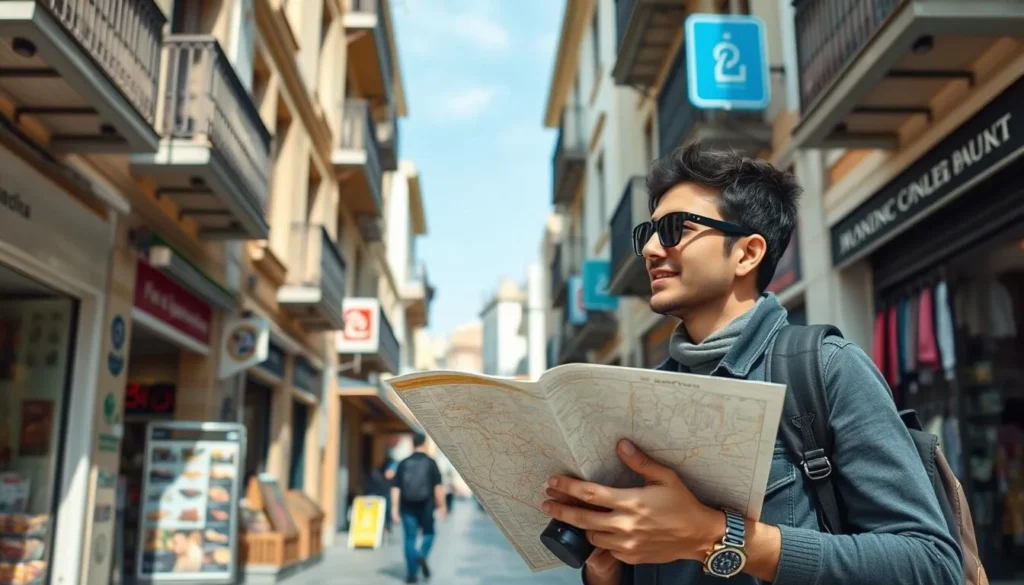
Money Matters
The Syrian Pound (SYP) is the local currency. Due to international sanctions, foreign cards typically don’t work in Syria. Bring sufficient cash (USD or EUR) to exchange. Exchange rates can fluctuate significantly, so check current rates before travel.
Major expenses (hotels, guided tours) can sometimes be paid in USD or EUR, but always confirm in advance.
Communication
Arabic is the official language, though some English is spoken in tourist areas and hotels. Learning basic Arabic phrases is highly appreciated by locals.
Internet access is available in most hotels and some cafes, though connection speeds may be slower than you’re accustomed to. Consider purchasing a local SIM card for mobile data if staying longer.
Health & Essentials
Bring all necessary medications as specific brands may not be available. Basic medical facilities exist in Latakia, but comprehensive care may require travel to Damascus or neighboring countries.
Bottled water is recommended for drinking. Sunscreen, insect repellent, and a hat are essential during summer months.
What to Pack
Essentials
- Modest, lightweight clothing (with layers for cooler evenings)
- Comfortable walking shoes for exploring
- Swimwear and beach essentials (if visiting in summer)
- Power adapter (Syria uses type C and E plugs, 220V)
- Basic first aid kit and personal medications
Recommended Extras
- Arabic phrasebook or translation app (downloaded for offline use)
- Photocopy of passport and important documents
- Portable power bank for charging devices
- Modest cover-up for visiting religious sites
- Small gifts from your home country (if meeting locals)
Experience the Mediterranean Charm of Latakia

Latakia offers a unique window into Syria that contrasts sharply with common perceptions of the country. With its Mediterranean beaches, mountain landscapes, rich historical sites, and relaxed atmosphere, this coastal gem provides a multifaceted travel experience that combines cultural exploration with natural beauty.
Whether you’re drawn by the ancient ruins of Ugarit, the fresh seafood cuisine, the mountain retreats, or simply the chance to experience Syrian hospitality in a coastal setting, Latakia rewards visitors with authentic experiences and memories that challenge preconceptions about this fascinating country.
As Syria gradually reopens to tourism, Latakia stands ready to reclaim its place as one of the Mediterranean’s most intriguing destinations—where history, culture, and natural beauty converge along the azure waters of the Syrian coast.
Ready to Discover Latakia?
Start planning your journey to Syria’s Mediterranean jewel:
The above is subject to change.
Check back often to TRAVEL.COM for the latest travel tips and deals.



